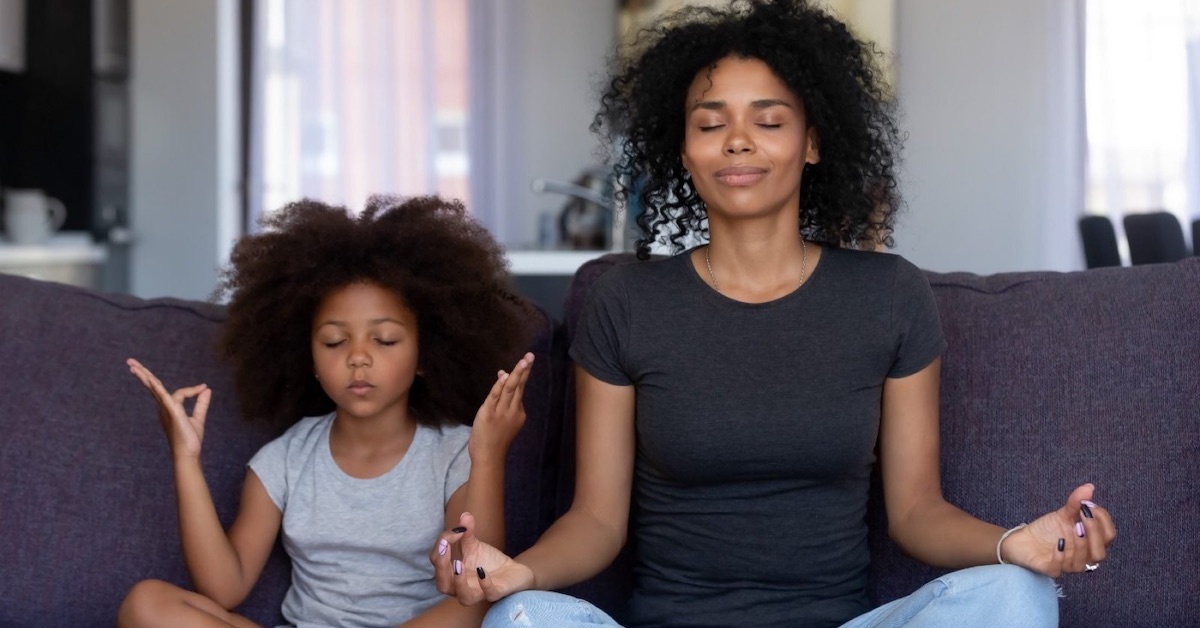How Mindfulness Meditation Can Help You and Those Around You

Sarah-Valin Bloom, LCSW
Quartet Health Clinical Director
April 23, 2020
“How do you leave your work at work?” “How can you listen to such painful stories all day?” These are questions that many mental health providers encounter and are real challenges that must be navigated over the course of one’s career. Regular contact with supportive colleagues, healthy boundaries, and a consistent self-care routine are important components of staying emotionally healthy. The more nuanced question of, “How do you help someone experiencing intense emotion without getting pulled in or overwhelmed in the moment?” is one we must all now consider.
With the emergence of the COVID-19 pandemic, or any large scale traumatic event, we all (therapist or not!) find ourselves offering support to distraught family, friends, colleagues, and even acquaintances. As each of us manage a plethora of feelings, including uncertainty, fear, grief, or anxiety, we are also exposed to the same feelings in those around us. The ability to be compassionate and empathetic is just as important as regulating one’s own emotional state during these interactions.
Emotional regulation allows someone to be an effective “helper.” If you become overwhelmed by someone else’s intense emotions, it limits your ability to help them calm down. Feelings and emotional states are “contagious.” Imagine spending time with someone who exudes calm and is present in a supportive way. Underlying feelings of fear or sadness may not go away, but being in this calm person’s presence is likely to help reduce the intensity of what you are feeling. Our bodies and brains respond to our environment and the feelings of others.
Right now, our own self-care and keeping ourselves as calm as possible in the face of stress is very important. One effective way to help keep yourself calm and regulate your own emotional states is through the practice of mindfulness. Below you will find some simple information, tips, and resources on mindfulness meditation.
What is Mindfulness?
Mindfulness is the simple practice of being present, in the current moment, without judgement. We are often caught up with thoughts of the past, anxieties about the future, planning, to do lists, and all kinds of whirling thoughts that can bring us far from being present. Mindfulness practices use sensory information or awareness as an anchor to help ground us in the present moment. The goal is not to make yourself stop thinking, but rather, experience the present moment as it is and allow thoughts to float in and out without becoming attached to them.
What are Some of the Benefits?
When we are able to experience or observe our own thoughts, without becoming attached, we are better able to regulate our own emotional state. Other benefits include:
- Reduced stress and anxiety
- Deeper sense of calm and groundedness
- Improved awareness of yourself and others
- Increased attention and focus
- Enhanced ability to manage stressful situations
- Improved overall health
- Lowers blood pressure and heart rate
- Improved concentration and memory
What are Some Ways I Can Practice Mindfulness?
The more you practice mindfulness, the easier it becomes. Like a muscle, the more you exercise it, the stronger it gets. Mindfulness practice may be done while sitting quietly in mediation but can also be practiced while moving around, in social situations, and even in the busiest of moments. The key is using some aspect of experience to anchor you in the present moment. Below are some of the ways you can begin to integrate mindfulness practice into your daily routine.
Using the Breath
- This is one of the most common practices and an easy one to start with.
- Sit quietly and begin to notice your breath. You may pay attention to the various sensations associated with breathing — the rise and fall of your chest and belly, the temperature of the air, the feeling in your lungs with each inhale and exhale.
- Each time you catch your mind wandering, bring your attention back to your breath.
- Once you get good at this, you can practice anywhere — at your desk, on the bus, in your car, or while taking a walk. Simply quiet your mind as best you can and bring your attention to your breath.
Using an Object
- This can be done visually or by holding something in your hands.
- Quiet your mind and bring your attention to whatever object you choose to focus on.
- Begin to notice the color, the shape, the size, all the visual aspects.
- If you are holding it, notice the weight, how it feels in your hands, the temperature, etc. The goal is to focus as intently as possible on the experience you are having in the present moment. In this case, that would be looking at or holding an object.
Drinking Water
- Take a small sip of water and hold it in your mouth.
- Notice the taste of the water, the feeling of the water on each part of your mouth, notice the temperature of the water, you may even swish it around and notice how that changes some aspect of your experience.
- Allow yourself to swallow the water, and notice how that feels — paying close attention to all the sensory details involved in your experience.
- If your mind wanders, bring it back to your experience of drinking the water.
- Take another sip and continue from there.
Walking or Standing
- Not everyone enjoys sitting quietly in meditation. For some people, movement is more calming. This can be applied to any movement but here, walking or standing are used as examples.
- Quiet your mind and bring your attention to your feet.
- Notice that you are standing or walking on the ground and how that feels on the soles of your feet.
- Begin to notice how your foot makes contact with the ground and how it changes with each step or shift of your weight.
- You may even change the pace of your steps, slowing enough to notice how your foot leaves and returns to the ground.
- Each time you notice your mind wandering, bring your attention back to the sensations of walking or standing.
- This can be done walking down the street, standing in line, or while working at your standing desk.
Listening
- You can use this practice while listening to music, traffic noise, the whirring of a fan, or any sound you’d like.
- Quiet your mind and bring your attention to the sound.
- Begin to notice the quality of the sound — the vibration, volume, speed, etc.
- If there are words, bring your attention to them as well, but just as part of the sound experience. Allow yourself to notice them and then let them go, creating space for the next words to follow.
- Each time your mind begins to get distracted by thoughts, gently bring your attention back to the sound.
Interacting with Others
- This one is a bit different than the practices listed above, but can be just as impactful. We interact with many people throughout our day but are often not fully present. We are distracted by our own thoughts, planning our responses, looking at emails — just simply caught up with something other than the person we are interacting with.
- Practicing mindfulness with others means focusing on the experience you are having at that moment.
- For example, if you are engaged in conversation and find your mind starts to wander, bring your attention back to what is being said, the facial expressions being shared, the gestures being made, etc.
- Listen and be present with your whole self…we tend to miss a lot!
What are Some Available Resources?
- There are many free meditation apps available in the app store. Quartet recommends speaking with a trusted source for a good recommendation that works for you.
- Using resources like youtube or other social media outlets can also be a great for free access to guided meditations
Explore more

7 Things I Wished I’d Known Before Starting Therapy
Going to therapy is like opening up a history book about yourself, written by you, and sharing it with a stranger.

What Microaggressions Are Really Doing to Your Health
They may have the word “micro” in them, but microaggressions are often likened to “death by a thousand cuts.”

COVID Has Changed The World as We Know It — It’s Okay to Grieve
Grief is a normal part of the human experience, but we live in a society that has little room for it.



